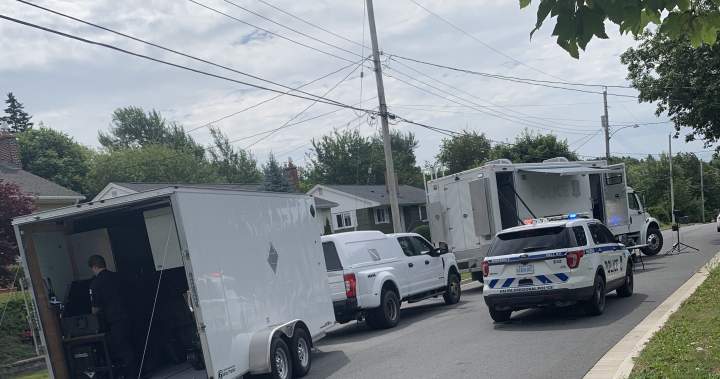In a disturbing discovery that sent shockwaves through a quiet Dartmouth neighborhood, police safely detonated a live grenade that was found in an apartment building on Tuesday evening, forcing dozens of residents to evacuate their homes as explosive experts worked to neutralize the threat.
The unsettling incident began shortly after 6 p.m. when Halifax Regional Police responded to a call about a suspicious device discovered at an apartment complex on Primrose Street. What officers found upon arrival was far from routine – a live military-style hand grenade that posed an immediate danger to everyone in the vicinity.
“I was just finishing dinner when police knocked on my door telling me to leave immediately,” said Margaret Thornton, a five-year resident of the building. “They wouldn’t say exactly what was happening, just that there was a ‘dangerous situation’ that required evacuation. I didn’t even have time to grab my medication.”
The discovery prompted authorities to implement emergency protocols, establishing a 100-meter exclusion zone around the building while the Explosive Disposal Unit was called to the scene. Residents were directed to a temporary shelter at a nearby community center as specialists assessed the volatile situation.
According to Inspector James Harrison of the Halifax Regional Police, the grenade appeared to be a military-grade explosive device rather than a replica or training model. “Our explosive technicians confirmed it was indeed a functional grenade capable of causing significant harm,” Harrison told CO24 News. “This isn’t something we encounter frequently in residential areas, which made the situation particularly concerning.”
The specialized team successfully conducted a controlled detonation of the device around 9:30 p.m., producing a loud explosion that was heard several blocks away. No injuries were reported during the incident, though residents weren’t permitted to return to their homes until nearly midnight.
Questions remain about how the grenade ended up in the residential building. Police have launched a criminal investigation to determine the origin of the explosive and whether it was intentionally placed there or inadvertently discovered among someone’s possessions.
“We’re exploring all possibilities,” said Detective Sergeant Maria Reynolds, who is leading the investigation. “We’re interviewing residents and reviewing security footage to establish a timeline and identify any persons of interest. We’re taking this extremely seriously.”
For residents like Joshua Bailey, who has lived in the building for over three years, the incident has shattered their sense of security. “This is supposed to be a safe neighborhood. Now I’m wondering what else might be hidden in the building,” Bailey said while waiting to return home. “I’ve got two young kids – how am I supposed to explain to them why we had to leave our home because of a bomb?”
Military experts consulted by CO24 suggest the grenade could be a relic from past military operations, noting that occasionally such dangerous artifacts surface when estates are cleared out or old collections discovered. However, they emphasized that even decades-old explosives can remain dangerous and should always be reported immediately to authorities.
This incident comes amid growing concerns about illegal weapons in Nova Scotia, with police reporting a 12% increase in weapons-related calls over the past year. Community safety advocates are calling for increased awareness about the dangers of military memorabilia and the proper channels for disposing of potentially dangerous items.
As the investigation continues, residents of the Primrose Street building are left wondering: in a peaceful Canadian neighborhood, how can we ensure the spaces we consider most secure aren’t harboring potentially deadly threats beneath the surface?

























